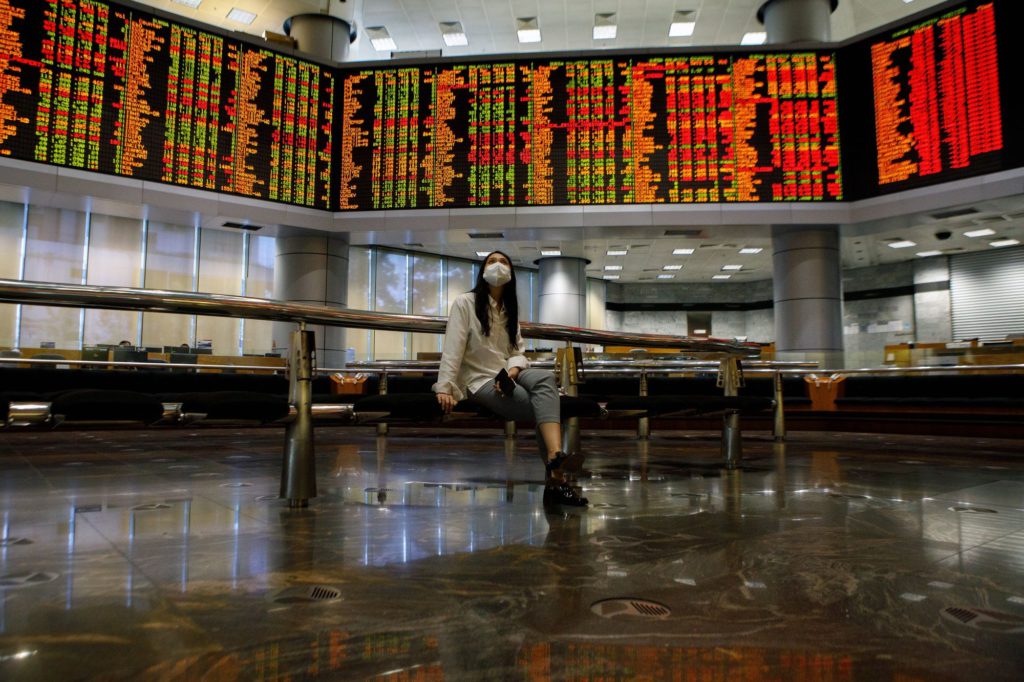(Bloomberg) — Stocks came under pressure amid persistent concern that a hawkish Federal Reserve will raise the odds of a recession. Treasury yields climbed to multiyear highs.
(Bloomberg) — Stocks came under pressure amid persistent concern that a hawkish Federal Reserve will raise the odds of a recession. Treasury yields climbed to multiyear highs.
Not even the bright spots on the earnings front like Netflix Inc., United Airlines Holdings Inc. and Procter & Gamble Co. were able to enthuse traders about a continuation of this week’s rally. One of the reasons is that going into the current season, estimates had already been cut to the bone. So beating forecasts wouldn’t be so hard.
Another aspect is that things haven’t changed dramatically on the economic front, with data showing a drop in new US home construction and mortgage rates jumping to a two-decade high. Minneapolis Fed President Neel Kashkari said late Tuesday the central bank can’t pause its tightening campaign once its benchmark rate hits 4.5% to 4.75% if “underlying” inflation is still accelerating.
Read: Famed 60/40 Portfolio Is So Beaten Down It’s Almost Cheap Again
“US equities have priced the most (but not enough) recession risk, and earnings estimates have further to adjust,” Citigroup Inc. quantitative strategists including Alex Saunders wrote. “US bonds have priced the least risk, but it will take some time before bonds react to recession risks given the hawkish Fed.”
To Nicholas Colas at DataTrek Research, an extension of any equity rally at this stage would require a backdrop of stabilizing bond yields — which was the setup for the two-month surge in the S&P 500 that started in mid-June. That seems like a “tall order,” however, given that Fed policy remains tight and yields are stuck at such high levels, he noted.
History suggests that the last innings of bear markets typically inflict a lot of pain on stock investors. That means more turbulence may lie ahead since the S&P 500’s drop over the past six months looks tame when compared with they type of declines typically seen in the last half-year of major equity downturns, according to Bespoke Investment Group.
Read: Options Show Traders Racing to Catch the Next Big S&P 500 Rally
Key events this week:
- US existing home sales, initial jobless claims, Conference Board leading index, Thursday
- Euro area consumer confidence, Friday
Some of the main moves in markets:
Stocks
- The S&P 500 fell 0.4% as of 10:55 a.m. New York time
- The Nasdaq 100 was little changed
- The Dow Jones Industrial Average was little changed
- The Stoxx Europe 600 fell 0.4%
- The MSCI World index fell 0.6%
Currencies
- The Bloomberg Dollar Spot Index rose 0.5%
- The euro fell 0.7% to $0.9788
- The British pound fell 0.6% to $1.1256
- The Japanese yen fell 0.3% to 149.68 per dollar
Cryptocurrencies
- Bitcoin fell 1.1% to $19,160.74
- Ether fell 1.4% to $1,296.16
Bonds
- The yield on 10-year Treasuries advanced nine basis points to 4.09%
- Germany’s 10-year yield advanced six basis points to 2.34%
- Britain’s 10-year yield declined seven basis points to 3.88%
Commodities
- West Texas Intermediate crude rose 0.4% to $83.18 a barrel
- Gold futures fell 1% to $1,638.60 an ounce
More stories like this are available on bloomberg.com
©2022 Bloomberg L.P.











